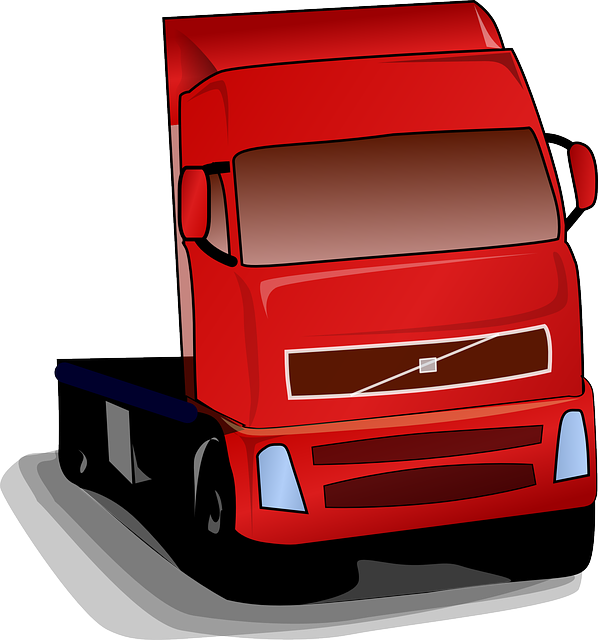Registering a car in California involves understanding specific requirements and undergoing a crucial step known as VIN (Vehicle Identification Number) verification. This comprehensive guide walks you through the process, from gathering essential documents to completing registration after successful VIN verification. We’ll also highlight common mistakes to avoid, ensuring a smooth experience. Key terms like ‘VIN verification’ are strategically incorporated throughout for optimal SEO.
- Understanding the Requirements for Car Registration in California
- Gather Necessary Documents for VIN Verification
- The Step-by-Step Process of VIN Verification
- After VIN Verification: Completing Your Vehicle Registration
- Common Mistakes to Avoid During Car Registration in CA
Understanding the Requirements for Car Registration in California

Before registering your car in California, it’s crucial to understand the state’s specific requirements. One key step is ensuring proper vehicle identification number (VIN) verification. This process involves confirming the VIN accuracy and checking for any outstanding issues related to the vehicle’s history. In California, you’ll need to conduct a thorough vin inspection to meet registration standards.
A mobile vin verifier or mobile vin verification service can streamline this process by offering convenient, on-site VIN checks. This is particularly beneficial in California’s bustling environment where quick and efficient administrative tasks are often essential. Understanding these requirements upfront will ensure a smoother car registration experience.
Gather Necessary Documents for VIN Verification

Before registering your car in California, you’ll need to gather several crucial documents for the VIN (Vehicle Identification Number) verification process. This step is essential as it ensures that your vehicle meets all legal standards and belongs to you. For a smooth registration, prepare the following:
1. Your valid driver’s license or state ID card.
2. Proof of residency in California, such as a utility bill or bank statement.
3. The vehicle’s title, if applicable, showing your name and permanent address.
4. A completed and signed California Vehicle Registration Application form (DMV Form DR-48).
5. Documentation proving that you’ve passed the required emissions test (if applicable) through a mobile VIN inspection or at a certified station.
The Step-by-Step Process of VIN Verification

The process of VIN verification is a crucial step when registering your car in California. It involves a systematic check to ensure the vehicle’s identity and history are accurate. Here’s how it works:
1. Obtain Your Vehicle Identification Number (VIN): Start by locating your car’s VIN, typically found on a plate at the driver’s side door frame or under the hood. This unique 17-character code is essential for identification.
2. Choose a Mobile Vin Verifier: In California, you can use a mobile vin inspection service to streamline the process. These services employ professionals who travel to your location and perform the VIN verification using specialized equipment to cross-reference the VIN with national databases, providing instant access to the vehicle’s history report, including any accidents, mechanical issues, or outstanding loans.
After VIN Verification: Completing Your Vehicle Registration

After passing the VIN verification process, the next step is to complete your vehicle registration in California. This involves several crucial steps to ensure your car’s legal status and your safety on the road. Once the vehicle identification number (VIN) of your car has been confirmed as legitimate by a mobile vin inspection or mobile vin verifier, you’ll need to gather essential documents. These typically include proof of ownership, vehicle registration forms, and a valid driver’s license.
You can usually obtain these forms online or from the California Department of Motor Vehicles (DMV) office. Fill out the necessary paperwork completely and accurately. Then, submit your application along with any required fees at your nearest DMV location or through their official website. This will officially register your vehicle, allowing you to legally operate it on California’s roads.
Common Mistakes to Avoid During Car Registration in CA

When registering your car in California, there are several common mistakes to avoid that can cause delays or even void your registration. One of the most critical steps is ensuring accurate and up-to-date information. Double-check all details like vehicle identification number (VIN), ownership history, and any previous accidents or damage reported on the title. An incorrect VIN during the vin verification process can lead to significant issues.
Another common pitfall is not having all required documents ready. Gather important paperwork such as proof of insurance, a valid driver’s license, and the vehicle’s title. Some residents make the mistake of attempting mobile vin inspection or vin inspection services from untrustworthy sources, which can result in fraudulent activities and unnecessary costs. Always rely on official California Department of Motor Vehicles (DMV) resources to ensure a smooth registration process.
Registering a car in California involves several steps, with VIN verification as a crucial process. By understanding the requirements and gathering the necessary documents, you can ensure a smooth registration experience. Following the step-by-step guide provided, along with avoiding common mistakes, will help you complete the process efficiently. Remember, accurate information and attention to detail are key to successfully registering your vehicle in California.
